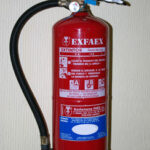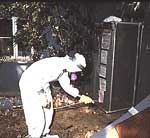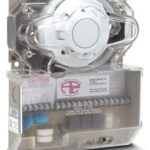Keeping the home in shape is job one for most homeowners. Whether it is cleanup after a project or the routine maintenance a home needs, a homeowner’s work is never done. Unfortunately, some of the tools we use to maintain our happy homes can be toxic.
Modern-day cleaners and detergents contain powerful and potentially harmful chemicals. Additives to increase brightness, kill bacteria, and reduce the need for scrubbing are often caustic to the person cleaning as well as to the rest of the family, pets, and the environment at large.
Take, for instance, those nifty additives called optic brighteners that are commonly added to laundry detergent to make your whites whiter. These fluorescent whiteners don’t actually get the clothes any cleaner, they simply mask the yellowing of fabrics that naturally occurs by absorbing certain ultraviolet rays and then reflecting back visible blue light. This gives garments the appearance of being cleaner, even if they are not. The trouble with this optical illusion is that these brighteners are washed down the drain once the rinse cycle is done and enter the local water supply where they can be toxic to fish. Some people also find that this additive can be irritating to sensitive skin and eyes.
Along with the ingredients designed to improve the performance of cleaning products, dyes that dress up color and perfumes that help deliver an artificial lemony or piney fresh scent can also be troublesome for a home’s occupants. While some products naturally have a pleasant deodorizing effect, like those that use citrus oil, many cleaners and degreasers have petroleum-based fragrances to mask the smell of the cleaning solvent. This means that while you are cleaning your home of the normal dirt you would expect to find, you are actually introducing new and potentially harmful materials into your living space.
Helping to confound the homeowner trying to keep a healthy home are claims by some products that their cleaning materials are safe because they contain “organic” ingredients. According to the Environmental Protection Agency (EPA), many cleaning, disinfecting, and degreasing products contain organic solvents that can release organic compounds while you are using them and, to some degree, when they are stored. This means that you are potentially introducing volatile organic compounds (VOCs) into your home, not only when you are actively scrubbing but even when these products are sitting under the kitchen sink. Organic in cleaning products doesn’t always mean safe and healthy.
The overall negative health effects of VOCs on a home’s occupants can be staggering. VOCs can cause eye, nose, and throat irritation; headaches; allergic skin reactions; dyspnea; loss of coordination; nausea; fatigue; dizziness; and damage to the liver, kidneys, and central nervous system. And the trouble doesn’t stop there—it flows downstream.
Chemicals used within the home for cleaning are almost always dumped down the drain and end up being released into local waters. Phosphates, which are sometimes used in laundry and dish detergents, have been found in increasingly strong concentrations in oceans and lakes. Abundant amounts of phosphates can cause eutrophication and destroy local wildlife habitats. Eutrophication is the scientific term for when an excess of nutrients encourages an unhealthy algae bloom. These blooms create a suffocating, slimy mess for the local ecosystem and, according to the EPA, are now present in 48% of America’s lakes.
Green Cleaning Solutions
If you spend some time reading labels and researching companies, you will be able to find quite a few green cleaning products on the market today. Because of the increased awareness of environmental, health, and sustainable living issues, products catering to the green crowd are becoming more economical and available.
However, if you really want to know what you are spraying on your countertops, nothing beats homemade solutions. The ingredients for healthy cleaning solutions are inexpensive, readily available, and nontoxic. Here is a list of the basics you’ll need before you begin:
Baking soda (sodium bicarbonate). If you need a reason to believe in the cleansing power of baking soda, just remember that it was the primary cleaning agent used in the restoration of the Statue of Liberty. Baking soda is an effective cleaning agent for three reasons:
1) The crystalline form of baking soda makes for an excellent scrubbing abrasive, but it’s not so abrasive as to harm sensitive fiberglass tub surrounds or tile flooring. In fact, it is the gentle abrasive qualities of baking soda that make it an ingredient in “whitening” toothpastes.
2) It is a natural deodorizer in both its dry and diluted state. This means it can work to neutralize all sorts of odors whether run through the laundry (use a half cup when adding bleach to your wash for the clothes to come out free of the bleach odor) or sprinkled directly on carpets before vacuuming to extract pet odors.
3) It plays well with others. Because sodium bicarbonate neutralizes acid qualities, baking soda is ideal when used in combination with lemon for cleaning stains or with white vinegar as a degreaser.
White vinegar (acetic acid). Vinegar is old—really old. This slick solution has been around since the dawn of recorded history and has yet to run out of new and helpful uses. Most white vinegar today is mass-produced using a rapid ethanol fermentation process. All vinegars are sold in concentrations between 5% and18% acetic acid, with the white or clear vinegar generally being the most potent. A 5% solution is plenty strong for most household tasks.
The cleaning uses for vinegar around the house are almost endless. If it’s dirty, vinegar will probably get it clean, shiny, and smelling fresh. Want a shiny toilet? Toss in a couple cups of vinegar, let it sit for five minutes, and then flush. Soap scum clogging up the clothes washer? Run a cup of vinegar with each load to dissolve it. Lunchbox have a stale smell? Soak a couple paper towels in vinegar and put them in the box overnight. Kitchen sink has a bad odor? Just dump a cup of baking soda down the drain and chase it (slowly) with a half-gallon of white vinegar. Dirty windows and countertops, a greasy kitchen sink, even pet urine and berry stains—vinegar takes care of them all.
Essential oils. Baking soda and vinegar do well to remove smells, but sometimes having a little fragrance in the air makes a home just seem cleaner. Instead of reaching for artificial perfumes, go natural with essential oils. Besides having a pleasant smell, many also pack powerful anti-bacterial, antiseptic, and deodorizing properties that make them ideal for certain household tasks.
Because the oils are derived from plants, they contain no fatty compounds so they dissolve easily and are less likely to leave any residue. To kill bacteria, mold, and germs, use tea tree or eucalyptus. For floors, think lemon, pine, lavender, or oregano, which is a powerful antiseptic. For laundry, consider orange. Citrus oils help get clothes cleaner and also provide a pleasant smell.
Scent-free, dye-free liquid dish soap. There’s nothing special here, just soap. Other ingredients to keep on hand include nonsudsing ammonia and isopropyl alcohol (rubbing alcohol). With these ingredients, you can create almost any cleaning solution you would normally buy in the store, without the synthetic additives and toxic dangers. Here are a few basic recipes for better cleansers:
Window cleaner
1/2 cup white vinegar
2 cups water
1/2 teaspoon liquid soap
5 drops of an essential oil
Mix and shake well before each use. Wipe windows down with a soft cloth.
Scrubbing paste
1/2 cup baking soda
1/2 teaspoon liquid soap
5 drops of an essential oil (tea tree or lavender for antibacterial cleansing)
Mix the ingredients together to form a toothpaste-like gel and spread it on a sponge. Rinse the surface well after cleaning.
Wood-floor cleaner
1 cup vinegar
1 gallon clean hot water
10 drops of an essential oil (pine or lemon are favorites)
Mix well and mop. Discard when the water gets cold or cloudy.
Keeping your home clean shouldn’t put you, your family, your pets, or the local waterways at risk. Taking advantage of the natural cleaning properties of these basic (and inexpensive) supplies makes for a cleaner and healthier home.



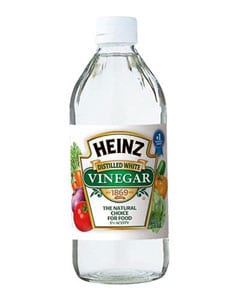
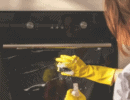

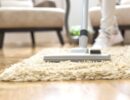
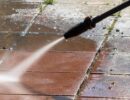
 Don Vandervort writes or edits every article at HomeTips. Don has:
Don Vandervort writes or edits every article at HomeTips. Don has:
